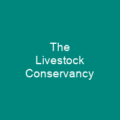Understanding Cattle: A Livestock Staple
Cattle are large, domesticated bovid ungulates widely kept as livestock. They come in various breeds such as taurine, zebu, and sanga cattle. These majestic creatures have been a cornerstone of human civilization for thousands of years, serving multiple purposes from providing meat to being used as draft animals.
Domestication and Breeds
Taurine cattle are found in Europe and temperate areas of Asia, the Americas, and Australia. Zebus, on the other hand, are mainly found in India and tropical areas of Asia, America, and Australia. Sanga cattle are primarily found in sub-Saharan Africa. These breeds vary widely in size, with the tallest being the Chianina.
History and Domestication
Cattle were domesticated from wild aurochs progenitors around 10,500 years ago, with separate domestication events occurring in central Anatolia and the Indian subcontinent. The term ‘cattle’ originated from Anglo-Norman and is derived from Latin caput, meaning ‘head.’ This word originally meant movable personal property, especially livestock, and is related to words for capital and chattel.
Life Cycle and Behavior
The natural life of domestic cattle is 25-30 years. Cattle are ruminants, meaning their digestive system processes plant material through micro-organisms that possess cellulases. They have one large stomach with four compartments: the rumen, reticulum, omasum, and abomasum. Cattle regurgitate and re-chew food in the process of chewing the cud.
The gestation period for a cow is nine months long, and farms often use artificial insemination to breed cattle. A cow’s udder has two pairs of mammary glands, and cows seek secluded areas for calving. Average calving interval is 391 days, and calves suckle an average of five times per day. Heifer and bull calves are equally attached to their mothers in the first few months of life.
Cognitive Abilities
Cattle have various cognitive abilities, including memorizing food sources, retaining memories for up to 48 days, and distinguishing familiar and unfamiliar animals. Young cattle learn more quickly than adults, and calves can distinguish their mother’s vocalizations from those of an unfamiliar cow. Cattle also categorize images as familiar or unfamiliar individuals and use visual lateralization when scanning novel and familiar stimuli.
Senses
Cattle live in a dominance hierarchy maintained through mock fights, licking, mounting, and horn displays. Vision is the dominant sense for cattle, with a field of view of 330°, but limited binocular vision. They are dichromatic and have better hearing than horses, but worse localizing sounds than goats and dogs. Cattle can distinguish live human speech from recorded speech and use olfaction to recognize conspecific individuals.
Behavioral Traits
Cattle exhibit emotional responses to learning, separation from mothers, and pain, as well as social stress when isolated. A 4-hour average sleep time is observed in domestic cows, who lie down to sleep deeply rather than standing. In 2009, the National Institutes of Health and US Department of Agriculture mapped the bovine genome, finding approximately 22,000 genes in cattle, with 80% shared with humans.
Hybridization
Breeding practices have led to hybrid individuals and breeds. Hybrid individuals and breeds exist not only between taurine cattle and zebu but also between one or both of these and some other members of the genus Bos – yaks, banteng, and gaur. Hybrids such as the beefalo breed can even occur between taurine cattle and either species of bison.
Role in Agriculture
Cattle are often raised by allowing herds to graze on the grasses of large tracts of rangeland. Many routine husbandry practices involve ear tagging, dehorning, loading, medical operations, artificial insemination, vaccinations and hoof care. In the United States, many cattle are raised intensively, kept in concentrated animal feeding operations.
Global Impact
The cattle population of Britain rose from 9.8 million in 1878 to 11.7 million in 1908, but beef consumption rose much faster. The country became the ‘stud farm of the world’ exporting livestock to countries where there were no indigenous cattle. In 1929, 80% of the meat trade of the world was products of what were originally English breeds.
Cattle have the largest biomass of any animal species on Earth, at roughly 400 million tonnes. The countries with the most cattle in 2023 were India with 307.5 million, Brazil with 194.4 million, and China with 101 million. Cattle produce meat (beef), milk, and leather for various purposes, with approximately 300 million cattle slaughtered each year for food, accounting for about a quarter of global meat production.
Health Concerns
Cattle are not often kept solely for hides, and they are usually a by-product of beef production. Hides are used mainly for leather products such as shoes. In 2012, India was the world’s largest producer of cattle hides. Cattle are subject to pests including arthropod parasites and diseases caused by pathogens.
Environmental Impact
Cattle health is a veterinary issue, a public health issue, and a food safety issue. Farming regulations are in place to limit the spread of disease and ensure meat and dairy products are safe to eat. Cattle disease attracted attention in the 1980s and 1990s when bovine spongiform encephalopathy (mad cow disease) broke out in the United Kingdom.
Cattle produce methane, a powerful greenhouse gas, as a byproduct of enteric fermentation, with each cow belching out 100kg a year. Additional methane is produced by anaerobic fermentation of stored manure, with cattle contributing around 7% of global greenhouse gas emissions. Concentrated animal feeding operations produce substantial amounts of wastewater and manure, causing environmental harms.
Overgrazing by cattle reduces biodiversity and increases soil erosion. Cattle husbandry practices raise welfare concerns, including high stocking density, veal calves separation from mothers, and two sports that are thought to be cruel. Cattle have been used in barter and play a part in several religions, with veneration of the cow being a symbol of Hindu community identity.

In conclusion, cattle have played a pivotal role in human history and continue to be essential for various industries. From providing meat and dairy products to serving as draft animals, their impact is undeniable. As we navigate the challenges of sustainability and ethical farming practices, understanding these magnificent creatures becomes more crucial than ever.
You want to know more about Cattle?
This page is based on the article Cattle published in Wikipedia (retrieved on February 5, 2025) and was automatically summarized using artificial intelligence.






